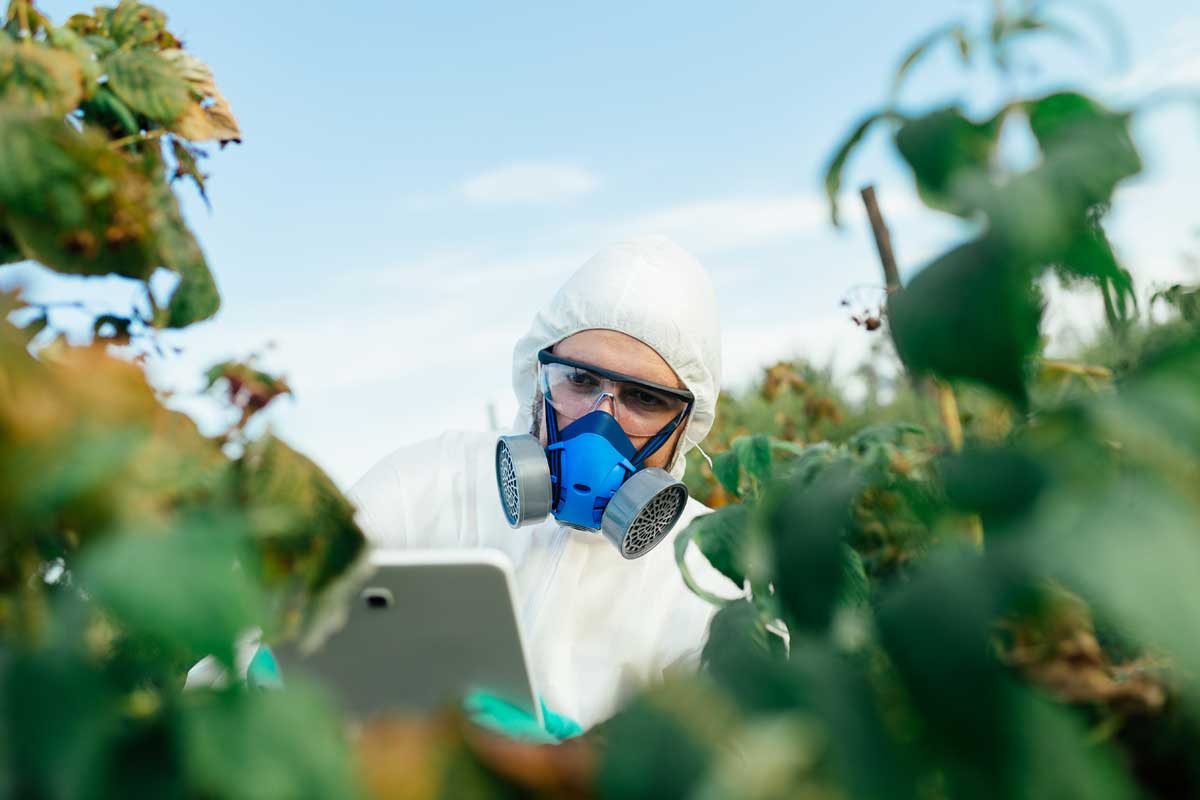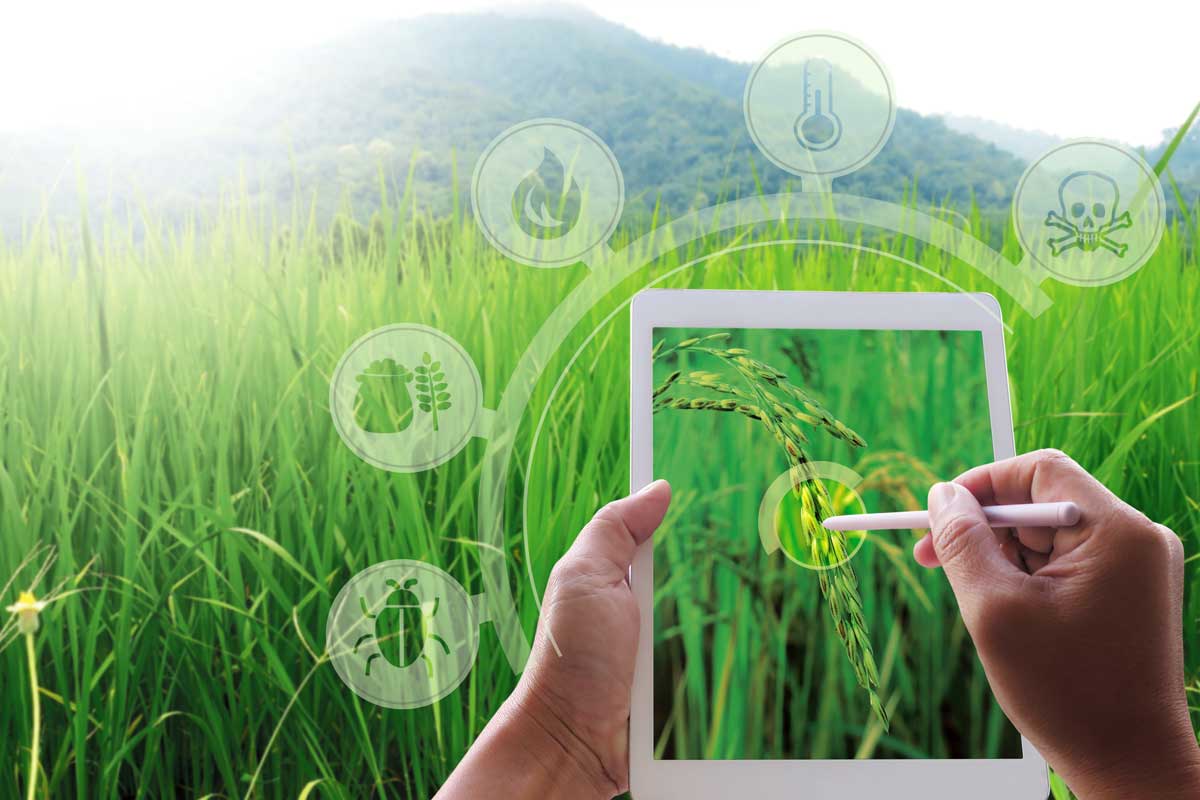
There’s nothing like sitting outside on a nice Spring day to eat lunch and enjoy the weather. However, depending on where you live, you might want to sit where it’s covered or limit your time outdoors, as food could become a magnet for pests such as fire ants or yellow jackets.
And these pests spoiling your meal also extend to how they are grown. If you’re trying to flex your green thumb and grow a garden, pests such as moths, ticks, mites, and even weeds can be counterproductive to your progress.
Americans spend billions on pest control, and the pest control market is expected to reach $42.5 billion by 2032, growing roughly 5% since 20201. The Different kinds of pests — from rodents, bugs, and weeds — can wreak havoc on landscapes, commercial buildings, crops, and the safety and well-being of individual homes.
As pests become more prevalent and damaging to vulnerable systems like the food supply, it’s critical for pest professionals to battle against invasive creatures effectively.
How AI and IoT Improve Pest Control
The emergence of the Internet of Things (IoT) and artificial intelligence (AI) tools revolutionized how pest control is approached to mediate issues. Through remote monitoring devices, sensors, and AI-powered trend and pattern detection, those utilizing pest control solutions can proactively mitigate and defend against encroaching pests. Both indoors and outdoors, IoT devices and AI are protecting the smart homes and smart buildings of the future; here is how a handful of real-world companies are creating pest solutions and tools that customize treatment plans, detect increasing numbers of pests, and ultimately lead to safer environments.
Predictive Analytics
With battery-powered IoT sensors capturing real-time data and analytics, software platforms can detect and analyze trends and patterns in weather conditions and infestations. These predictive insights allow pest professionals to proactively prep landscapes and fight against emerging pests, preventing problems from becoming bigger.
Solutions like Rentokil Pest Connect offer data analysis and reporting for pest control, aggregating real-time analytics and evaluating these data points across a massive scale2. For example, the system can identify sources of infestation, provide an optimized treatment plan, and help users keep pests at bay.

Precision Treatments
AI-powered edge intelligence systems allow for more targeted and customized treatments, ensuring only the pests you’re trying to eliminate are affected. Pesticides and herbicides are sprayed in specific areas, reducing their usage and potential environmental impact. Fewer chemicals are used, which is more cost-effective and reduces water runoff into local lakes and water systems.
Blue River Technologies has a precision sprayer called See & Spray™ that heavy agricultural machinery company John Deere utilizes3. See and Spray uses computer vision to identify weeds among plants and target those pests, saving farmers up to 77% in herbicide costs and preventing any unnecessary drift in treatment.
Reduced Environmental impact
Ultimately, all the benefits of IoT and AI allow for more effective, customized treatment. Not only can pest professionals defend the environment from damage, but targeted treatments protect animals, wildlife, and plants from unnecessary harm. This creates a more sustainable and eco-friendly solution, offering long-term environmental benefits.
Thinxtra uses 24/7 targeted IoT monitoring to detect rodents proactively, which helps reduce property damage and the environmental impact of harsh chemicals4. For commercial buildings, this keeps safety and sanitary standards up to par and ensures businesses can maintain compliance.
Future Outlook of Pest Control Technology
Smart devices are poised to transform pest control as advancements in sensor technology, robotics, and drones become more sophisticated and accessible. Advancements will reduce the need for harsh, polluting chemicals that could have potentially harmful consequences for humans and the environment. Augmented and virtual reality can simulate pest infestations and support inspections with augmented overlays, projected data inside headsets, and more.
As algorithms learn from more data, targeted treatment can improve, proactively combating infestations while preserving natural wildlife in the area. Also, as the global food supply becomes increasingly unstable due to population growth, climate change, and pests, IoT and AI can play an important role in preserving the world food supply.
How Ambiq is Contributing
Smart pest control technology that can identify patterns in pests and provide data-driven insights and strategies to take them head-on will require an embedded chip that brings performance and energy efficiency. Ambiq is a leading manufacturer of energy-efficient semiconductor solutions that enable advanced AI applications on edge devices such as smart sensors.
Utilizing one of Ambiq’s System-on-Chips (SoCs) solutions could provide unparalleled energy efficiency and performance to run these intuitive solutions that require 24/7 monitoring. Learn more about the applications Ambiq support here.
Sources:
1 Pest Control Market to Reach $30.0 Bn, Globally, by 2027 at 5.2% CAGR: Allied Market Research | May 4, 2021
2 How data and actionable insight are changing pest control to improve food safety | 2024
3 See & Spray™ Select | Precision Ag | John Deere US | 2024
4 Anticimex, 2024


